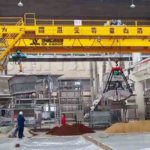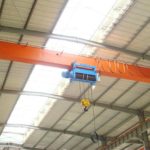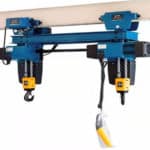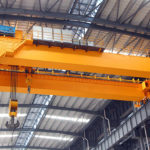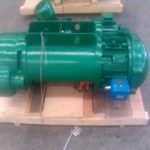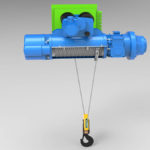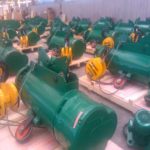The corrosion treatment of the explosion-proof electric hoist cover easily deforms the shell and is difficult to store. The appearance will be affected, and there is a risk of scratching at any time during use. Rusty internal parts will increase the friction between the parts. Excessive parts consumption will increase costs. In addition, it consumes the motor and shortens the service life of the motor. The rust of explosion-proof electric hoist is still very harmful, so how to deal with rust?
Explosion-proof electric hoist derusting methods can be divided into manual derusting, mechanical derusting and chemical derusting. Manual rust removal refers to manual rust removal with a wire brush, scraper, emery cloth or abrasive paste; for copper and its alloys, tung oil can be used to remove patina. There are two types of mechanical derusting tools: wire brush and sandblasting derusting machine. Chemical rust removal is to make it react with iron rust by pickling, so that the rust component becomes iron chloride or iron sulfate, so as to achieve the purpose of rust removal. In order to prevent the explosion-proof electric hoist from rusting and causing unnecessary trouble and loss, the explosion-proof electric hoist must be maintained to prevent it from rusting.
The brake failure of the explosion-proof electric hoist will cause serious consequences. Braking failure is one of the common failures of explosion-proof electric hoist. Brake failure is very important. But the novelty is that if we can detect and take measures in time, then we can avoid dangerous situations. It can be said that if the brake is not detected in time, the hook will exceed the limit position. In severe cases, the motor will heat up and the motor will burn.The main reasons for brake failure or large braking distance are: brake clearance is too large; there is oil in the brake; the brake ring is severely worn; the brake spring is broken; the fastening screw of the motor shaft or gear shaft end is loosened; the overload is released. These faults only need to be adjusted or replaced. In addition, the temperature rise of the motor exceeds the limit on the nameplate, which is also a common fault of the brake.
The main reason is: the movement clearance of the brake wheel is too small; overload. Explosion-proof electric hoists are more dangerous than ordinary electric hoists. A simple brake failure may just be unreliable brakes and damaged accessories. However, if the explosion-proof measures fail, an explosion hazard may occur
